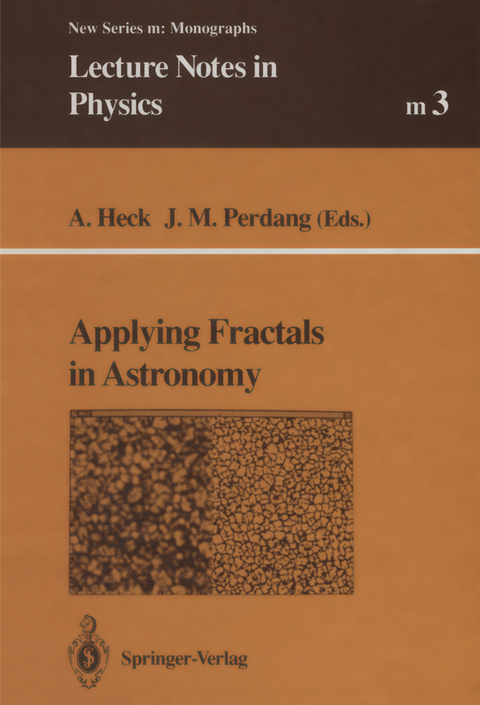
Applying Fractals in Astronomy
Seiten
2014
|
1. Softcover reprint of the original 1st ed. 1991
Springer Berlin (Verlag)
978-3-662-13848-9 (ISBN)
Springer Berlin (Verlag)
978-3-662-13848-9 (ISBN)
'Fractal geometry addressesitselfto questions that many people have been asking themselves. It con cerns an aspect of Nature that almost everybody had been conscious of, but could not address in a formal fashion. ' 'Fractal geometry seems to be the proper language to describe the complezity of many very compli cated shapes around us. ' (Mandelbrot, 1990a) 'I believe that fractals respond to a profound un easiness in man. ' (Mandelbrot, 1990b) The catchword fractal, ever since it was coined by Mandelbrot (1975) to refer to a class of abstract mathematical objects that were already known at the turn ofthe 19th century, has found an unprecedented resonance both inside and outside the scientific community. Fractal concepts, far more than the concepts of catastrophe theory introduced a few years earlier, are currently being applied not only in the physical sciences, but also in biology and medicine (Goldberger and West 1987). In the mid-eighties, Kadanoff (1986) asked the question: 'Why all the fuss about /ractals'! '. He offered a twofold answer: in the first place, it is 'because of the practical, technological importance of fractal objects'. Indeed he emphasised the relevance of these structures for materials scientists and oil drilling engineers, in search of structures with novel properties, or models for the flow of oil through the soil. His second answer was: 'Because of the intellectual interest of fractals '.
The book addresses students of astronomy and astrophysics. It is the first comprehensive presentation of fractal geometry and its application to various problems of astrophysics, including astronomical data analysis.
Geometry and Dynamics of Fractal Sets.- Pulsating Stars and Fractals.- Turbulence, Fractals, and the Solar Granulation.- Fractals and the Large-Scale Galaxy Distribution.- Is the Spatial Distribution of Galaxies a Bounded Self-Similar Structure? Observational Evidences.- Fractal Aspects of Galaxy Clustering.- Fractal Properties in the Simulations of a One-Dimensional Spherically Expanding Universe.- The Fractal Structure of the Quantum Space-Time.- The Real Stuff.
| Erscheint lt. Verlag | 18.4.2014 |
|---|---|
| Reihe/Serie | Lecture Notes in Physics Monographs |
| Zusatzinfo | IX, 212 p. 29 illus. |
| Verlagsort | Berlin |
| Sprache | englisch |
| Maße | 170 x 244 mm |
| Gewicht | 385 g |
| Themenwelt | Naturwissenschaften ► Physik / Astronomie ► Astronomie / Astrophysik |
| Schlagworte | Astronomy • astrophysics • Astrophysik • fractal mathematics • Hydrodynamics • Hydrodynamik • Mathematische Physik |
| ISBN-10 | 3-662-13848-4 / 3662138484 |
| ISBN-13 | 978-3-662-13848-9 / 9783662138489 |
| Zustand | Neuware |
| Haben Sie eine Frage zum Produkt? |
Mehr entdecken
aus dem Bereich
aus dem Bereich
die Geschichte und Erforschung unserer Galaxie
Buch | Hardcover (2023)
C.Bertelsmann (Verlag)
30,00 €
Grundlagen, Anwendungen in Astrophysik und Kosmologie sowie …
Buch | Softcover (2022)
Springer Spektrum (Verlag)
49,99 €
Von Molekülen über Einzeller zum Menschen
Buch | Softcover (2022)
De Gruyter (Verlag)
39,95 €


